Hegel H80 Integrated Amplifier Review

Hegel Music Systems is a maker of high quality, high value audio gear that has a reputation for its good sound. Hegel’s range includes amplifiers, CD players, DAC’s and a headphone amplifier. They are based in Oslo, Norway with production exported all over the world. The Hegel H80 Integrated Amplifier with on-board DAC is our review item, retailing in Australia for $3,090. The H80 is the entry level integrated amplifier out of a range of three and also affectionately known as the “Music Machine” in the Hegel advertisements.
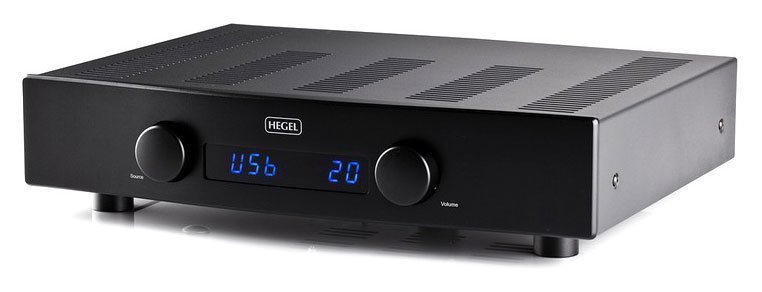
All Hegel products are based on a simple philosophy:
The audio reproduction instrument shall reproduce the original musical sound, purely and naturally. It shall use Scandinavian design reflecting natural music reproduction and styling to fit in with any interior. The products shall be easy to operate and shall be manufactured according to the best quality principles. Our aim is to give you the best musical experience!
In this review, we will see examine the H80 to see how well it fits the Hegel philosophy.
Description
The Hegel H80 is a fairly understated looking integrated amplifier, in a Scandinavian kind of way, very functional but without being flashy. The front faceplate of solid aluminium is curved from the centre to the outer sides, which imparts an elegant look. The finish is produced by glass bead blasting the front panel and knobs and then anodizing the surface. There are only two controls on the front face, both are large black knobs, volume and input select. There is a large central display for the input selection and volume setting. It is a blue lit 7 segment LED digital with a black background, easy enough to read from a distance, but having only 3 characters for the input means that a type of shorthand is used. The combination of upper and lowercase is confusing and looks kind of retro. You quickly get used to it though, and the display can be switched off via the remote control for a stealth look.
The power on switch is hidden from plain sight, under the front left edge of the unit, easy to use, but not intuitively easy to find the first time that you look for it. There is no headphone socket. It all adds up to a minimalist look and feel, which with continued use is very pleasant. It’s a case of the amplifier being a low key part of the music chain.
What is obvious upon close inspection is the build quality and well finished surfaces. It is surprisingly heavy for its size at 12Kg and the huge toroidal transformer and large heatsink is no doubt responsible for the weight. In use it never gets hot, ever, even when played loudly and I respect manufacturers that spend appropriately where it counts. There has to be a correlation to the reliability and longevity of the equipment.

The Hegel has a good assortment of inputs, both analogue and digital. The H80 has 2 unbalanced (RCA) line level inputs and 1 balanced (XLR) line level input along with 2 coax digital (RCA) inputs, 2 optical digital (TOSLINK) inputs and a USB type B input to make this a very versatile integrated amplifier with an on-board DAC. The H80 supports full high definition audio with a resolution of 24bits / 192kHz on the coaxial and optical inputs. The USB input is fully plug & play compatible with a maximum resolution of 24 bits / 96 kHz.
Hegel is known for their good sounding DAC’s. Last year StereoNET’s Marc Rushton reviewed the HD25 DAC very positively. The DAC inside the H80 is actually based on Hegel’s higher priced stand-alone DAC’s, with a useful flow down of technology. Hegel uses a proprietary re-clocking technique to lower jitter and make the resulting sound more natural.
The analog stages have also received special attention, with the pre amplifier section and design directly inherited from one of their far more expensive standalone pre amplifiers. The power amplifier is class-A/B design and uses Hegel’s patented “SoundEngine” technology. The benefit of this design is to reduce distortion, as well as increasing the damping factor. Hegel states in the supplied specification that the damping factor is more than 1000, which is very high for a moderately priced amplifier. The audible benefit is of that is bass control, with the driver cone doing exactly what it is told to do, due to the very low output impedance of the amplifier.
Setup
The H80 has been designed to be very easy to setup and use. With a single balanced and two unbalanced line level inputs, you could connect up a Phono stage to use a turntable and a CD player or music server. If the digital source has a digital out, I would suggest that you connect it up to one of the digital inputs. With five to choose from, you can’t go wrong. As the USB input is plug & play, there is no need to load a driver, it just works. I connected up several items without any issues. Other manufacturers, are you listening? There is a single set of high quality multi way speaker binding posts and IEC power socket to connect up and you’re up and running.
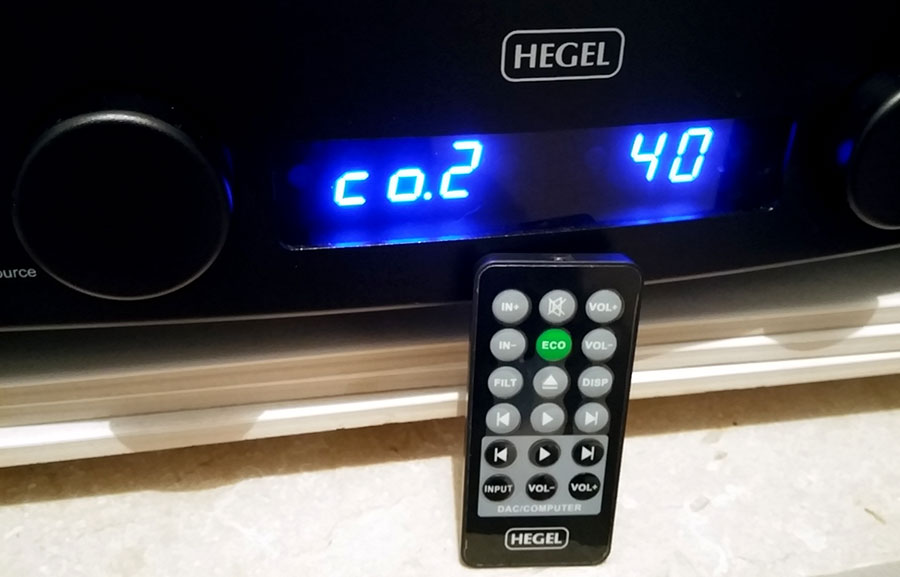
 There is a small plastic remote control supplied, which allows you to change the volume, select the input, switch off the display, as well as a very handy ability to manoeuvre within play lists on your computer, Skip / Play / Pause the songs. But only for the USB input. I found the remote control to be a little bit flimsy and small, with thin, membrane-covered buttons. Although it is easy enough to use, it is also far too easy to loose behind the sofa. There is a better quality but optional metal remote control at $249 RRP available, should you prefer it.
There is a small plastic remote control supplied, which allows you to change the volume, select the input, switch off the display, as well as a very handy ability to manoeuvre within play lists on your computer, Skip / Play / Pause the songs. But only for the USB input. I found the remote control to be a little bit flimsy and small, with thin, membrane-covered buttons. Although it is easy enough to use, it is also far too easy to loose behind the sofa. There is a better quality but optional metal remote control at $249 RRP available, should you prefer it.
The manual states honestly that “the amplifier needs some break-in time before maximum sound quality can be experienced.” Also that it “performs best after being powered on for one hour, to warm up the electronics.”
I can vouch for the accuracy of both those statements. Although it still sounded fine out of the box, it did improve with use over a couple of weeks. The amplifier also seemed to sound better when worked and in fact the harder it is driven the better it sounded for that session, until it was cold again and needed to be warmed up again. If you listen often throughout the day, my suggestion would be to just leave it on always.
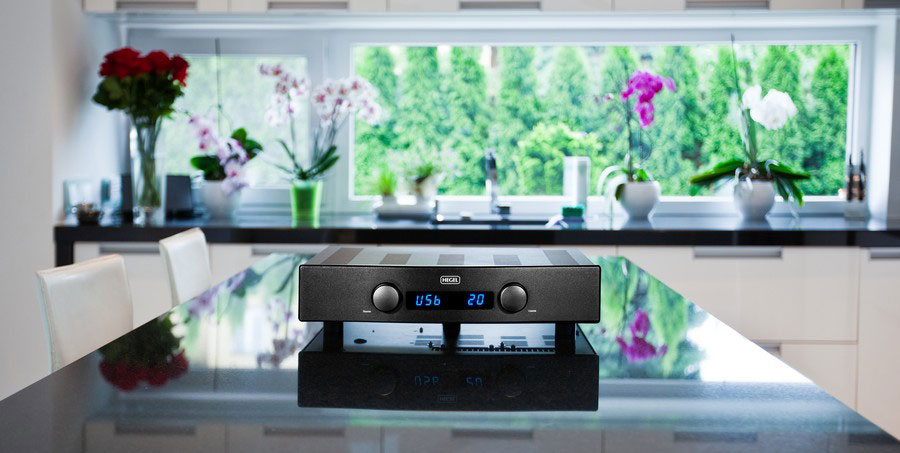
Listening Impressions
The first track that listened to was Rebecca Pidgeon “Spanish Harlem” a track that may have its detractors, due to the fact that it has been used to an excess at shows, but it remains a great test track. Hey that’s why it’s played. I used the Harbeth HL Compact 7ES-3 loudspeakers, which worked very well with the Hegel.
Right from the outset I could tell that I was going to enjoy listening to the H80 integrated amplifier. You just know from the very first notes that you hear that you are listening to a well-crafted product that can reproduce beautiful music. There was a wonderful sense of balance and musicality, without any harshness or dryness. There was a sense of naturalness and organic flow that was not at all forced or artificial. It quickly engages the listener and involves you in the music, holding your interest and concentration for long periods of time, without being tiresome or fatiguing. It’s simply easy to listen to. The soundstage is large, wide and high, but not really deep. The instruments hang nicely in their own space, with good decay and reverb tails.
“I Surrender Dear” by Terry Snyder and The All Stars brings brass and percussion into an upbeat tune that is fast and mesmerising, especially as my version was ripped from a near silent LP played on a Caliburn turntable. The speed of the percussion is awesome and you should hear the big fat sounding baritone saxophone.

The tonal balance is spot on, with no particular region dominating or artificially highlighting itself, or sitting out of place. During review sessions, this allowed many differing types of music to sound natural and to be able to play virtually any type or genre of music with confidence that it would sound great.
I believe that part of the reason that it is engaging is the fact that it is very dynamic. Both macro and micro dynamics are conveyed in a natural, way. Unlike some amps that can sound rather dry and somewhat boring, the Hegel isn’t like that. It doesn’t have the life taken away from it. The H80 is rated at 75w/channel into 8 Ohms, or 125w/channel into 4 Ohms, but at times and depending on the choice of speaker, it could sound rather more powerful than the specifications would indicate.
I tried the H80 with the 4 Ohm Dynaudio BM6 nearfield monitors, with 86dB-sensitivity, which although being an older model are certainly no slouch in the dynamic department. My favourite Simple Minds track is “Hunter and the Hunted” with a rhythmic kick drum and driving bass line and soaring vocals and synth. It’s a punchy track and demands to be played with plenty of volume. The H80 had no problem driving the Dynaudio’s to high levels with great control.
You can hear the tight grip the amplifier has with the bass driver and that gives you slam and bass extension. That’s the reason that it sounds more powerful than the 75 w/channel specification suggests. It’s all in the level of control and ability to play loudly with drive and verve, which is clean and entertaining. Incidentally, well known jazz keyboardist Herbie Hancock evidently performed a synth solo on that track.
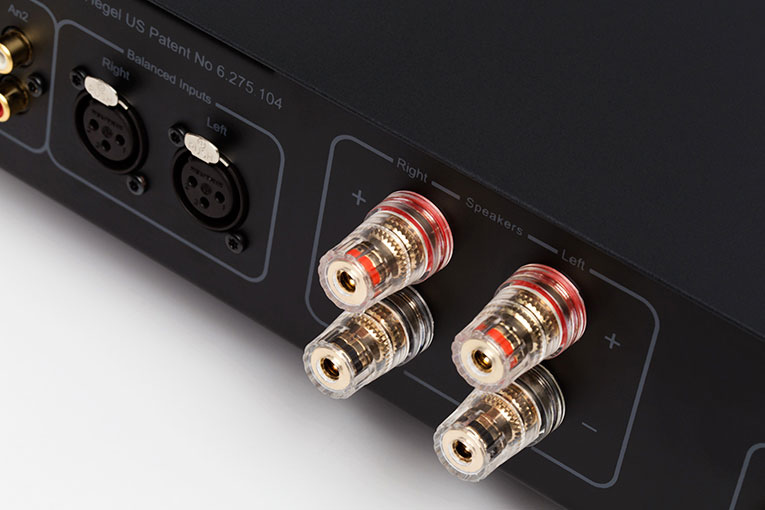
Alicia Keys’ drummer, the talented Trevor Lawrence Jr. takes centre stage in the introduction to “I Need You”. The Hegel comfortably handled the big snare hits and kick drum with natural speed, great timing and with plenty of slam. I normally turn up the first 20 seconds or so and then reduce it for the rest of the track, but letting it play on, the bass guitar starts with bass extension and without distortion or confusion that signals the amp is distressed or running out of current. It just sailed along with all the spatial information and reverbs intact, impressively.
Connected up my more efficient hybrid Dynaudio – Ribbon assembly speakers, it sounded even more powerful and dynamic with great speed of delivery. I was surprised with the amount of genuinely punch and engagement that came from the small amplifier. When connected to the less efficient Wilson Benesch Vector loudspeaker, (review coming) it was still all of the above, but with a lessening of dynamics and punch. These speakers were not quite as comfortable and are possibly wanting for even more power than the modest Hegel could deliver.
The lesson here is that with any amplifier, of any type or power output, it is always important to listen carefully to the combination that is created and to hear how it sounds. Matching the amp and speakers is like finding the right wine for your favourite cheese. Sure it still tastes fine, but get the combination just right and its bliss.
The volume control of the Hegel amplifier is graduated with steps from 0 to 99 on the display. Depending on the source and the speakers that I have connected, I noticed the need to run fairly high numbers on the display, many CDs needed at least 50 to get any amount of reasonable volume. I don’t see this as an issue, as it’s always the sound that is more important than any numerical value and you get used to it.
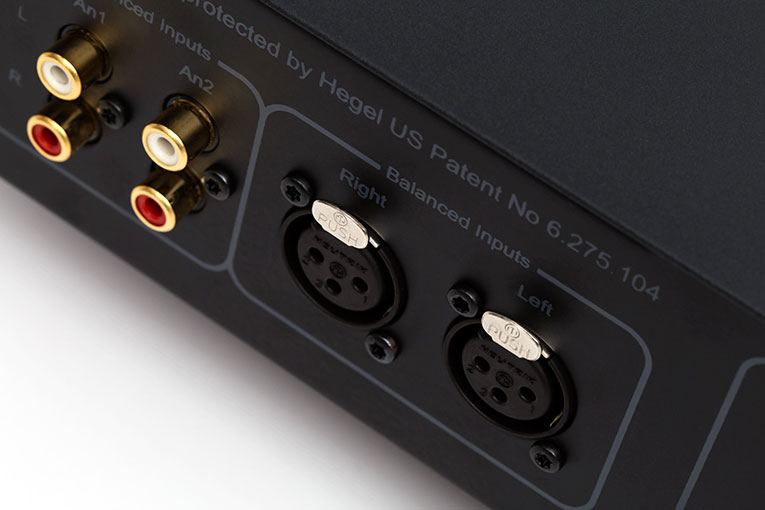
Switching to something a little more musically cultured, I played Mozart’s “Horn Concerto No. 4 in E flat major, KV 495: III. Rondo: Allegro” played by Lin Jiang and the West Australian Symphony Orchestra. It was delightful how animated the horn is, with plenty of clean syncopated notes that have space around them, natural decay and sounds nicely separated from the rest of the orchestra. The rhythm and timing of this amplifier is very good and this track highlighted it well.
I tested the Hegel using both the line level inputs and the digital inputs. To my surprise the digital input sounded considerably better than the regular inputs. Perhaps I shouldn’t be surprised, knowing the skill and experience that Hegel have in producing excellent sounding DAC’s, but I have to say that at the moderate price of the H80, it is a rare find. The majority of integrated amplifiers have an almost ‘after thought’ of a DAC added, but this unit really benefited from the high quality internal DAC. It handily out performed my Rega DAC-R. It was more natural sounding, with better timing, larger soundstage and is more tonally neutral.
I couldn’t hear any major difference between the digital inputs besides the normal differences that you experience with various grades of cables. My suggestion would be to connect your digital source directly to the digital inputs and leave the analog inputs for a Phono stage or some other analog device.
I briefly listened to the excellent Lavardin Model IS, (review coming) swapping it out against the Hegel H80 using the analog input and connected to the Harbeth Compact 7 speakers. Both amplifiers are natural sounding, very open and engaging. The Lavardin has a tonal balance that is less filled out in the bottom end than the Hegel, with an obvious deficit in output power. The midrange is similarly open and neutral but the Lavardin has more emphasis in the treble region which is very clean and extended. Overall I preferred the Hegel and had I used its digital input the margin would have been greater.
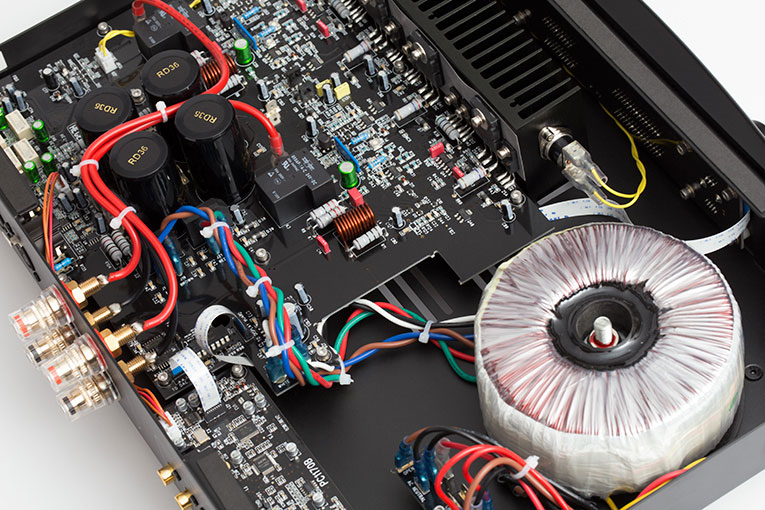
Conclusion
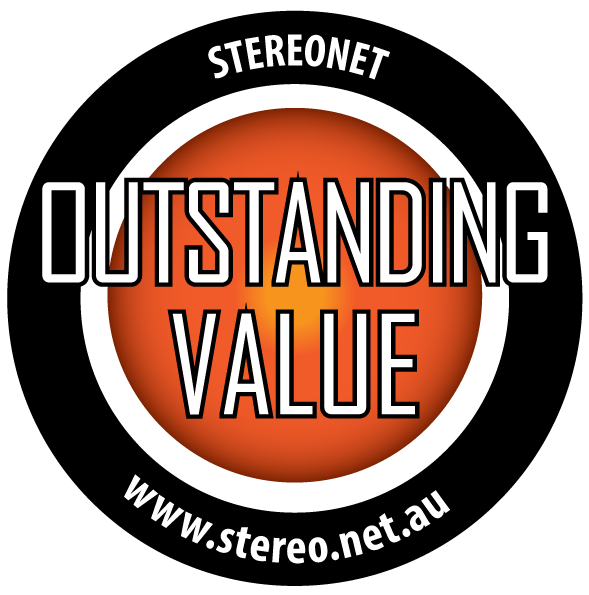 If you are used to your typical tired big brand Japanese integrated amplifier, you will have a huge smile on your face when you hear how good this amp sounds.
If you are used to your typical tired big brand Japanese integrated amplifier, you will have a huge smile on your face when you hear how good this amp sounds.
What the Hegel has produced is a really fine integrated amplifier that sounds better than it should at the price. When I first listened to it, well before knowing the price, I thought that the sound was representative of an amplifier of something costing probably close to double the price. The internal DAC alone is worthy of the asking price. If the H80 is only the entry level, I would love to hear the rest of the range.
The understated styling really grew on me over the time that I had it for the review. I can imagine it with a small music server sitting next to it, along with some good bookshelf speakers, or even some slim floor standers. It would be a really good system using only 3 components. I would spend the change that you get from the remainder of your budget by spending it on a couple of good cables and hey presto, it’s entry to high end sound on a beer budget.
When Hegel stated in their philosophy statement that “Our aim is to give you the best musical experience” I believe that they succeeded.
PROS
Punchy dynamic sound, Naturalness, Composure, Musically involving, Value, Simplicity, User friendliness
CONS
Flimsy remote control,
Specifications
- Digital inputs: 2 coax, 2 optical and 1 USB
- Analog inputs: 2 RCA unbalanced (1 configurable) and 1 XLR Balanced input
- Output Power: 75 W pc into 8 Ohms, 125 W pc into 4 Ohms
- Frequency response: 5 Hz - 100.000 Hz
- Signal-to-noise ratio: More than 100dB
- Crosstalk: Less than -100dB
- Distortion: Less than 0.01% @ 50W 8 Ohms 1kHz
- Intermodulation: Less than 0.01% (19kHz + 20kHz)
- Damping Factor: More than 1000
- Dimensions/Weight: 10cm x 43cm x 34.5cm (HxWxD), 12kg
Hegel H80 Integrated Amplifier is available now for $3,095 RRP.
For more information visit Advance Audio.
Mark Gusew
Starting his first audio consultancy business in the early ’80s whilst also working professionally in the electronics industry, Mark now splits his time between professional reviewing and AV consultancy.
Posted in:Hi-Fi Amplifiers Integrated Amplifiers
Tags: hegel advance audio h80 integrated amplifier
JOIN IN THE DISCUSSION
Want to share your opinion or get advice from other enthusiasts? Then head into the Message Forums where thousands of other enthusiasts are communicating on a daily basis.
CLICK HERE FOR FREE MEMBERSHIP
Trending
applause awards
Each time StereoNET reviews a product, it is considered for an Applause Award. Winning one marks it out as a design of great quality and distinction – a special product in its class, on the grounds of either performance, value for money, or usually both.
Applause Awards are personally issued by StereoNET’s global Editor-in-Chief, David Price – who has over three decades of experience reviewing hi-fi products at the highest level – after consulting with our senior editorial team. They are not automatically given with all reviews, nor can manufacturers purchase them.
The StereoNET editorial team includes some of the world’s most experienced and respected hi-fi journalists with a vast wealth of knowledge. Some have edited popular English language hi-fi magazines, and others have been senior contributors to famous audio journals stretching back to the late 1970s. And we also employ professional IT and home theatre specialists who work at the cutting edge of today’s technology.
We believe that no other online hi-fi and home cinema resource offers such expert knowledge, so when StereoNET gives an Applause Award, it is a trustworthy hallmark of quality. Receiving such an award is the prerequisite to becoming eligible for our annual Product of the Year awards, awarded only to the finest designs in their respective categories. Buyers of hi-fi, home cinema, and headphones can be sure that a StereoNET Applause Award winner is worthy of your most serious attention.



